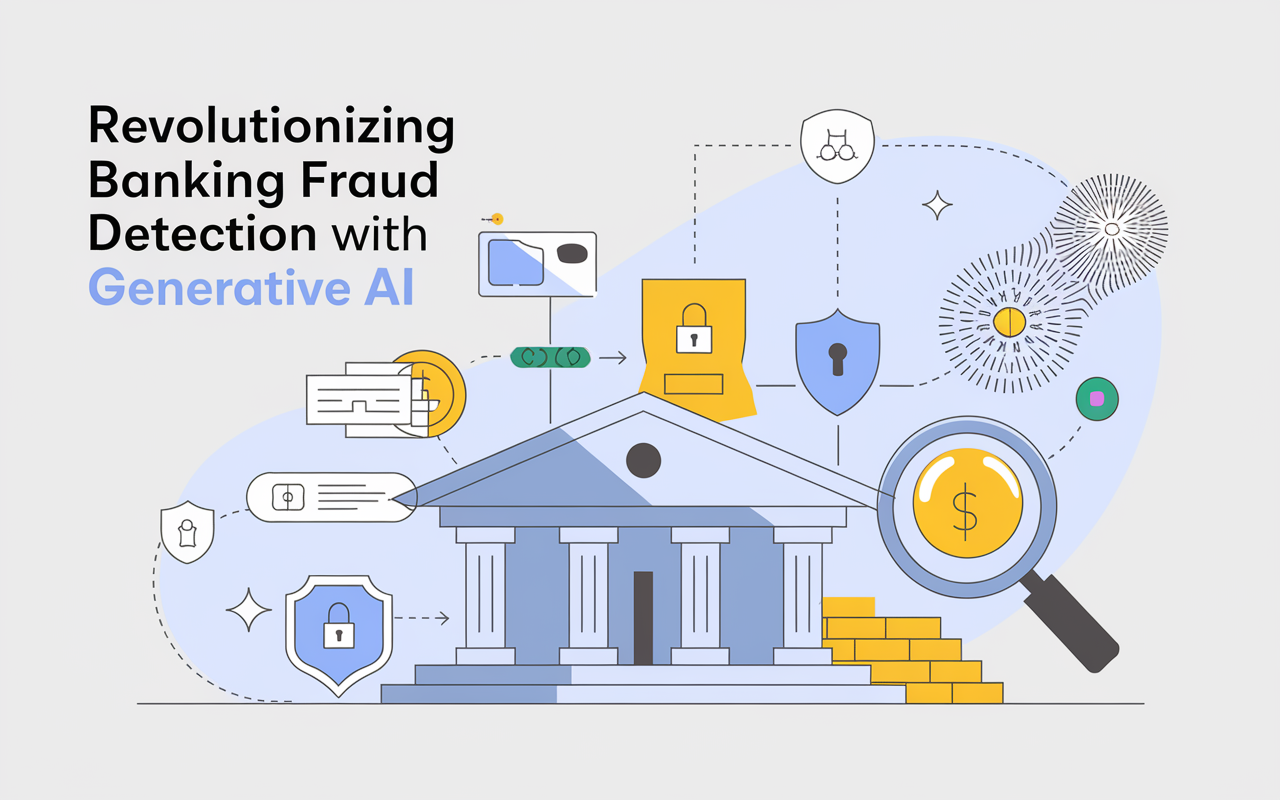
Introduction
Fraud detection has always been a cornerstone of banking security, but the rise of digital transactions and sophisticated cybercriminal tactics has made it a more complex challenge. Generative AI is emerging as a game-changing solution, enabling financial institutions to enhance fraud detection capabilities. By leveraging advanced machine learning (ML) and natural language processing (NLP), banks can identify fraudulent activities more effectively, reducing losses and strengthening trust with customers.
Generative AI: A New Frontier in Fraud Detection
-
Traditional fraud detection systems rely heavily on pre-set rules and often struggle with identifying evolving fraud techniques. Generative AI addresses this limitation by analyzing vast datasets in real time to uncover hidden patterns.
-
For instance, AI can detect irregularities in transaction behavior, such as unexpected withdrawals or atypical spending, allowing banks to act immediately.
-
Unlike static systems, generative AI evolves by learning from past fraud attempts.
-
This adaptability ensures it can anticipate and counter emerging threats, offering a proactive layer of defense against cybercriminals.
-
A common challenge in fraud detection is the high number of false positives that waste resources and inconvenience customers.
-
AI minimizes these by providing accurate insights, ensuring legitimate transactions aren't flagged unnecessarily.
2. Policy Creation and Cross-Industry Collaboration
3. Continuous Learning to Outpace Threats
b. Banks can build threat models based on historical data to preemptively secure vulnerable systems.
a. A robust fraud detection system reassures customers that their finances are secure.
b. This trust is essential for retaining customers and attracting new ones in a competitive market.
Generative AI is redefining fraud detection in banking by combining real-time analysis, adaptability, and precision. As institutions embrace this technology, they can enhance security, reduce losses, and build lasting trust with their customers. Fraud detection is no longer just a defensive strategy but a proactive measure ensuring resilience in an increasingly digital financial ecosystem.
You can book a consultation today by visiting us at PDI.

Posted by PDI Marketing Team
Pacific Data Integrators Offers Unique Data Solutions Leveraging AI/ML, Large Language Models (Open AI: GPT-4, Meta: Llama2, Databricks: Dolly), Cloud, Data Management and Analytics Technologies, Helping Leading Organizations Solve Their Critical Business Challenges, Drive Data Driven Insights, Improve Decision-Making, and Achieve Business Objectives.




